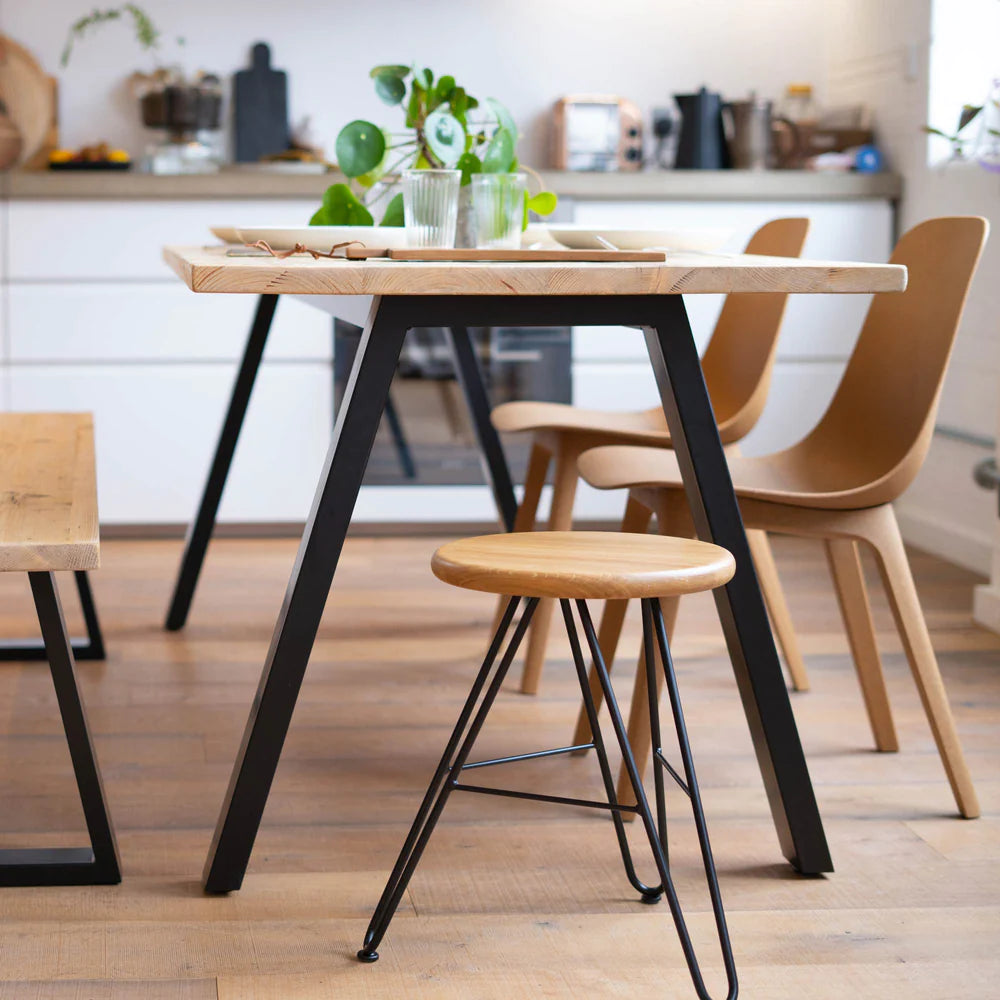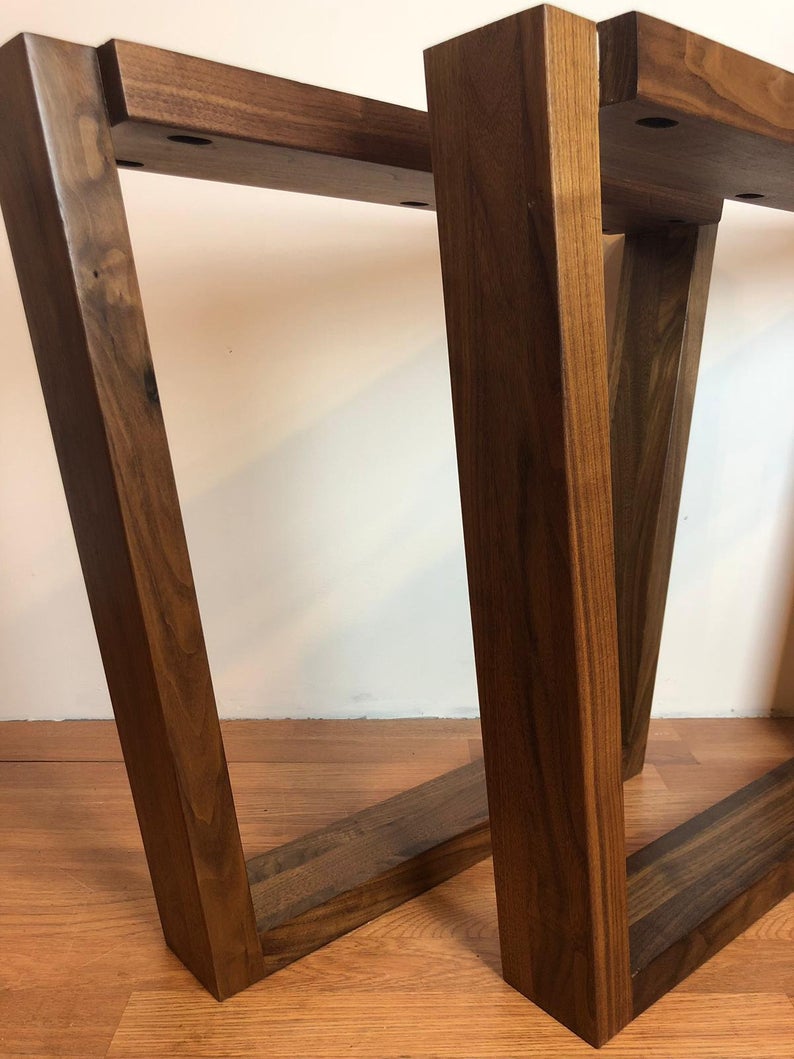Update Your Table's Appearance with Decorative Dining Table Legs Wood Styles
Update Your Table's Appearance with Decorative Dining Table Legs Wood Styles
Blog Article
Key Variables to Maintain in Mind for Table Legs Timber Choices
When selecting timber for dining table legs, a number of crucial factors call for careful factor to consider to ensure both capability and aesthetic allure. The choice of timber kind, defined by its resilience and unique grain patterns, plays an essential role in the overall design and longevity of the item. In addition, one need to contemplate upkeep requirements and the environmental effects of sourcing materials. As these aspects link, they substantially affect the final result of your table. Nevertheless, recognizing the nuances of each element can be intricate, leading to crucial choices that warrant further exploration.
Wood Types and Attributes
When selecting wood for eating table legs, it is necessary to comprehend the one-of-a-kind characteristics of various wood kinds. Various timbers use distinctive advantages and drawbacks, influencing both the sturdiness and aesthetic appeal of the finished item.
Hardwoods, such as maple, oak, and cherry, are frequently chosen for their strength and resistance to wear. Oak, recognized for its excellent toughness, likewise features a prominent grain that can include personality to the table. Maple provides a smooth surface and is much less susceptible to warping, making it a dependable choice for useful furnishings. Cherry wood, with its abundant shade that grows with time, gives an extravagant look yet might require more upkeep to stop scratches.
On the various other hand, softwoods like want and fir are more economical and easier to function with, yet they are much less resilient than woods. Pine is lightweight and features a cozy, rustic appearance, making it a preferred selection for casual eating setups. However, it is a lot more susceptible to scratches and dents.
Recognizing these qualities will certainly aid in making an informed choice to ensure the legs of the dining table satisfy both practical and visual requirements.
Grain Patterns and Appearance
Choosing the ideal grain pattern can dramatically enhance the aesthetic charm of table legs. The timber's grain is not just an aesthetic characteristic; it imparts a special individuality and beauty per item. Different wood species display unique grain patterns, varying from the straight lines of maple to the intricate swirls of oak and the striking figure of walnut. These patterns can evoke different styles, from rustic to contemporary, making it important to select a grain that aligns with the general style of the dining space.
Moreover, the orientation and scale of the grain can affect the perceived size and sophistication of the table. For example, bigger, much more noticable grains may provide a bold, significant result, while finer, subtler grains can develop a fine-tuned, understated look. In addition, the completing process can even more enhance these patterns, highlighting the natural charm of the wood and drawing out rich tones.
Inevitably, the selection of grain pattern should harmonize with other design components, such as the tabletop and surrounding furniture, making sure a cohesive aesthetic that raises the dining experience. Thoughtful selection of timber grain not just adds to the table's appeal yet likewise mirrors the owner's taste and design.
Longevity and Stamina
The sturdiness and toughness of eating table legs are vital factors to consider for ensuring longevity and security in any eating room. Selecting the right wood is essential, as various species show differing levels of strength.

Inevitably, spending in high-quality timber view website and durable building and construction approaches will yield a table that stands the test of time, while supplying a reliable foundation for many dishes shared among friends and family. Focusing on durability and strength guarantees that your eating table continues to be functional and visually pleasing for several years to find.
Upkeep and Care
Correct maintenance and care are vital for preserving the toughness and toughness of table legs made from timber. Regular cleaning is important; making use of a soft, moist towel makes sure that dirt and debris do not build up, which can result in scratches and monotony. It is suggested to stay clear of severe chemicals or unpleasant products that can damage the coating.
Additionally, applying a suitable wood polish or wax occasionally can assist keep the sheen and protect the wood from moisture and spills. It is critical to comply with the manufacturer's suggestions regarding the type of item to use, as specific coatings might react negatively to specific chemicals.
Humidity and temperature level variations can also impact wood table legs, causing them to warp or fracture. It's ideal to place the table away from direct sunshine and warmth resources. If the table legs have any type of dents or scrapes, resolving these quickly can prevent additional damage.
Last but not least, periodically evaluating the joints and screws check these guys out for rigidity is very important to maintain architectural integrity (Dining Table Legs Wood). By adhering to these maintenance practices, property owners can ensure their wood table legs stay enticing and useful for several years ahead
Ecological Factors To Consider
When picking timber for eating table legs, it's necessary to take ecological factors to consider right into account. The sourcing and sustainability of timber are extremely important in decreasing eco-friendly influence. Selecting timber from licensed see here now sources, such as those backed by the Forest Stewardship Council (FSC), guarantees that the timber is harvested sensibly, promoting forest conservation and biodiversity.

Moreover, regional sourcing of wood decreases transportation discharges, supporting local economic climates while minimizing ecological effect. It is likewise recommended to be conscious of the wood's treatment and ending up procedures, as specific chemicals can be dangerous to both human health and wellness and the atmosphere. By prioritizing lasting timber options, consumers can contribute to ecological conservation while taking pleasure in the toughness and appeal of their dining table legs.
Conclusion
In final thought, picking wood for eating table legs necessitates cautious consideration of different variables, including timber types, grain patterns, and toughness. Maintenance demands and environmental sustainability more influence timber selections, emphasizing the relevance of sourcing from certified or recovered products.
When selecting wood for eating table legs, numerous vital variables require mindful factor to consider to guarantee both performance and visual appeal.Proper maintenance and care are crucial for maintaining the resilience and stamina of eating table legs made from timber.When selecting wood for dining table legs, it's necessary to take ecological factors to consider into account. By prioritizing sustainable wood options, consumers can add to ecological conservation while taking pleasure in the sturdiness and beauty of their dining table legs.
In verdict, selecting wood for eating table legs necessitates careful factor to consider of various elements, including wood types, grain patterns, and sturdiness. Dining Table Legs Wood.
Report this page